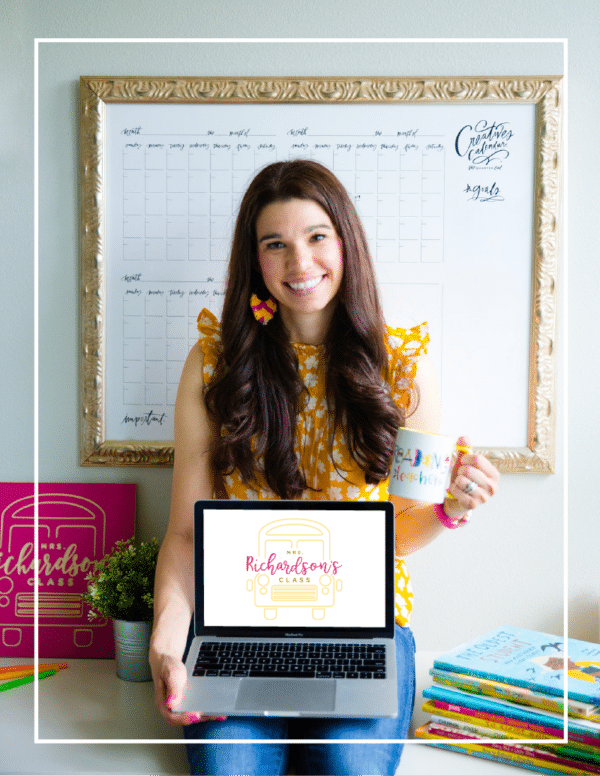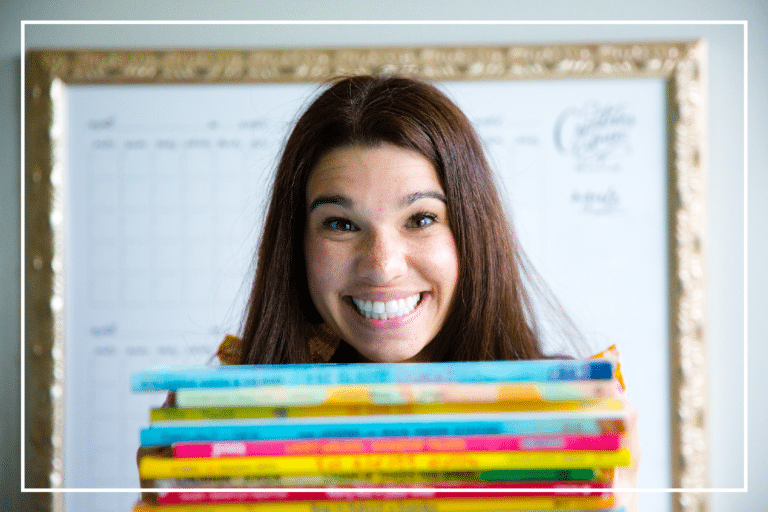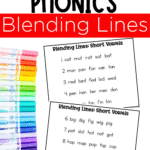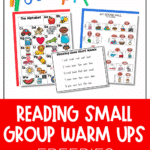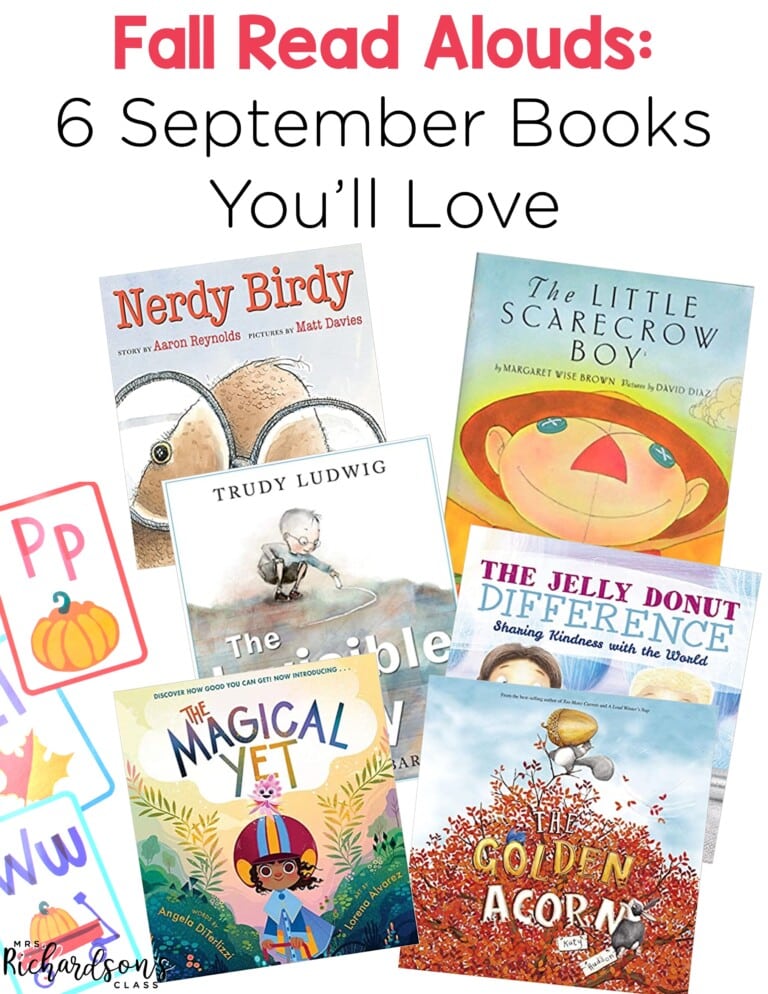

You are there! You have finally trained your little learners well in literacy centers, you have gathered the best decodable readers, you know where your kids stand with their phonics skills, and you are *almost* ready to sit down at the small group table. Except one thing–how do you begin the precious time together? Every minute truly matters and aids in their literacy development. What do you do when it comes to reading small group warm ups? I have some ideas to share that are meaningful and simple to implement. Plus, you can grab the FREEBIES to easily get started!
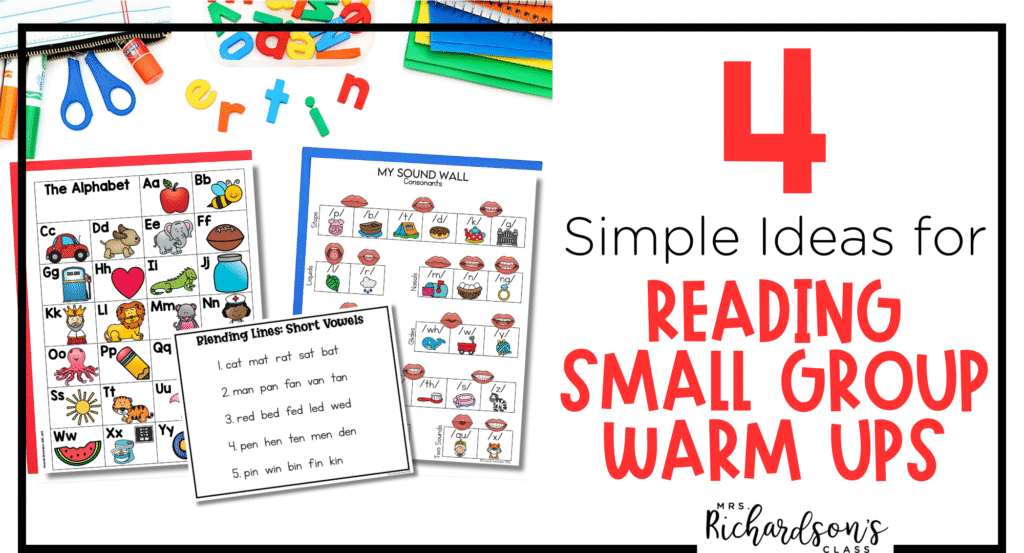
A simple chant of the alphabet chart is a powerful way to activate letter-sound knowledge. Not only is it engaging and rhythmic, but it also reinforces phonemic awareness and helps build automaticity with sounds—essential skills for both beginning and developing readers.
Try a quick chant like:
A /a/ /a/ alligator
B /b/ /b/ bee
C /k/ /k/ cat…
You can grab a free printable alphabet chart to use with your groups right here. It’s perfect for keeping in student folders or laminating for small group tables!
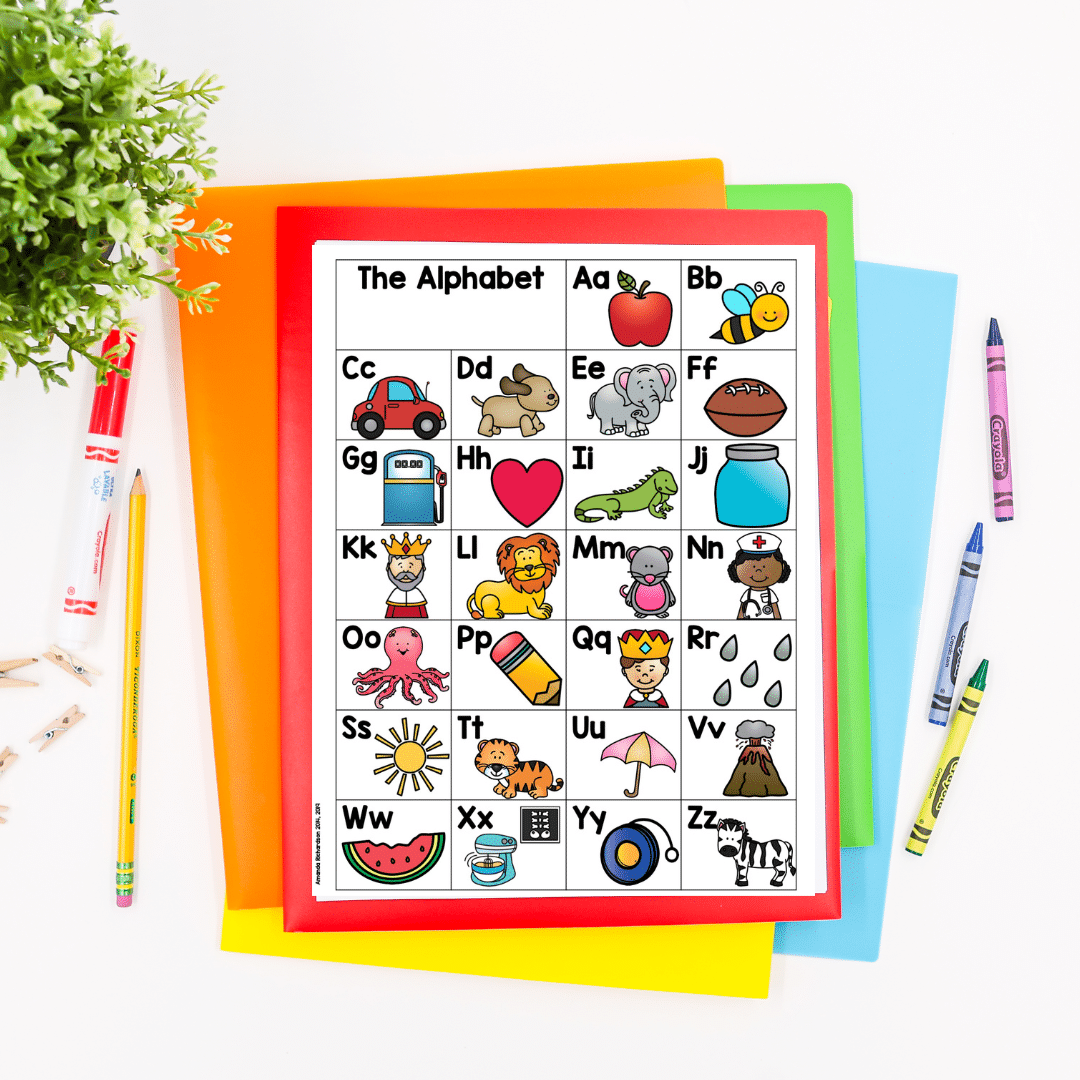
Students can follow along with their fingers, or use a fun pointer, as they chant or echo you. The goal isn’t speed, but clarity and consistency with sound knowledge. This is one of my favorite reading small group warm ups!
Blending practice helps students move from isolated sounds to whole words—and blending lines are a fantastic way to warm up those decoding muscles. Each line presents a series or words that share a pattern, allowing students to build fluency and confidence.
“Research shows that teachers who spend larger than average amounts of time on blending– modeling blending and providing loads of practice blending words in solution and in context– achieve greater student gains (Haddock, 1978: Rosenshine & Stevens, 1984).”- Wiley Blevins, A Fresh Look at Phonics
Here’s a quick example of a blending line for short a words:
sat – pat – mat – hat – rat
To make it even more effective, point to each word, have students read it aloud together, and then reread the whole line for fluency. You can vary the difficulty by changing the phonics pattern or making the words longer by adding phonics patterns (for example: blends and short vowels, digraphs and short vowels, etc.).
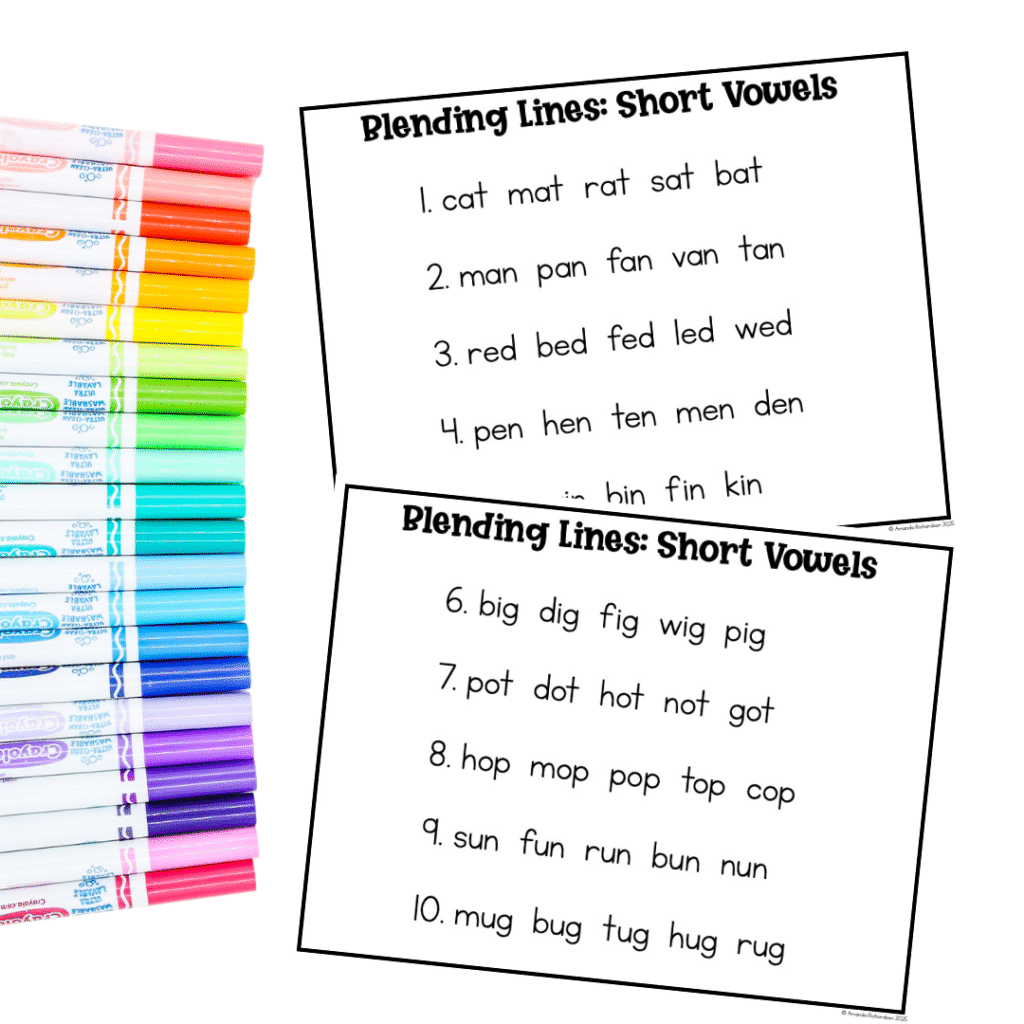
Want a ready-to-use set? I created a free download with 10 blending lines you can use right away for reading small group warm ups. Just join my email list below and I’ll send it straight to your inbox!
Personal sound walls give students ownership over the sounds they’ve learned and a visual tool for connecting letters to sounds. Starting your small group with a quick chant of the sound wall is an excellent way to reinforce grapheme-phoneme connections.
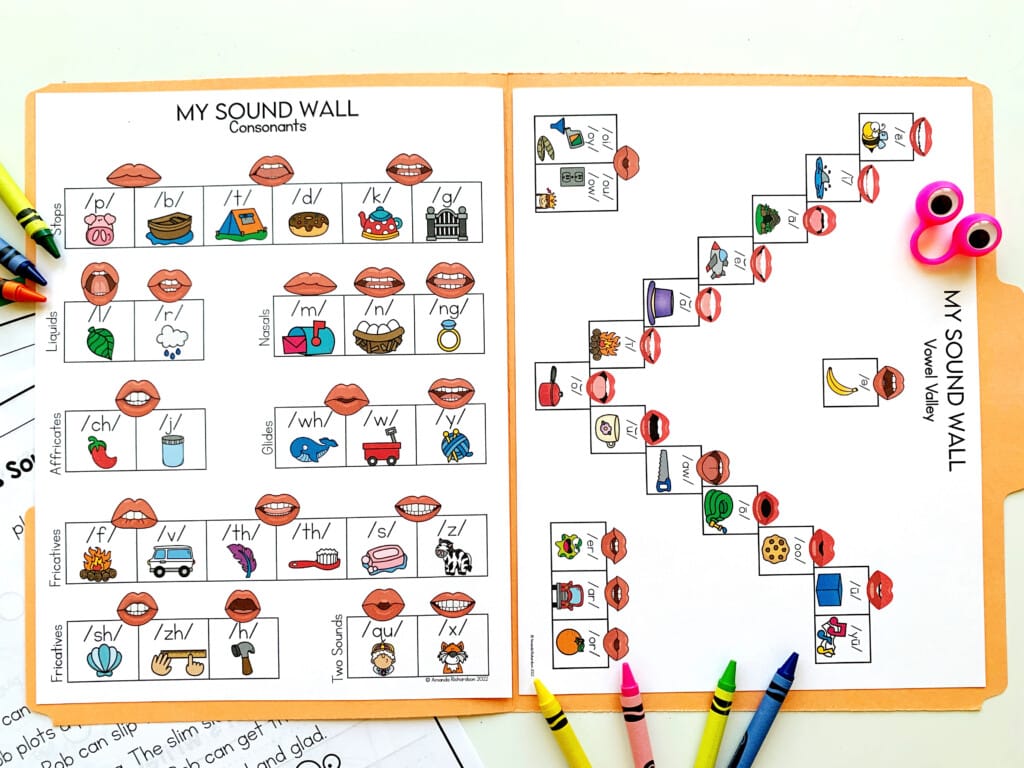
Here’s how to do it:
For example:
/sh/ – shell – sh
/ch/ – chili – ch
This daily repetition helps build stronger neural pathways for phonics skills, especially for students who benefit from multisensory reinforcement.
You can learn more and grab a free personal sound wall download on my blog right here. It’s a small change that makes a big difference!
Warm-ups don’t have to be complicated—sometimes, the best way to get started is a quick review of sight words that have been taught. When I was in the classroom, there wasn’t a good sequence to teach them, but now I truly believe that teaching them as phonics skills are taught is best.
Keep a stack of flashcards handy for each group, and rotate the words regularly to keep them fresh and relevant.
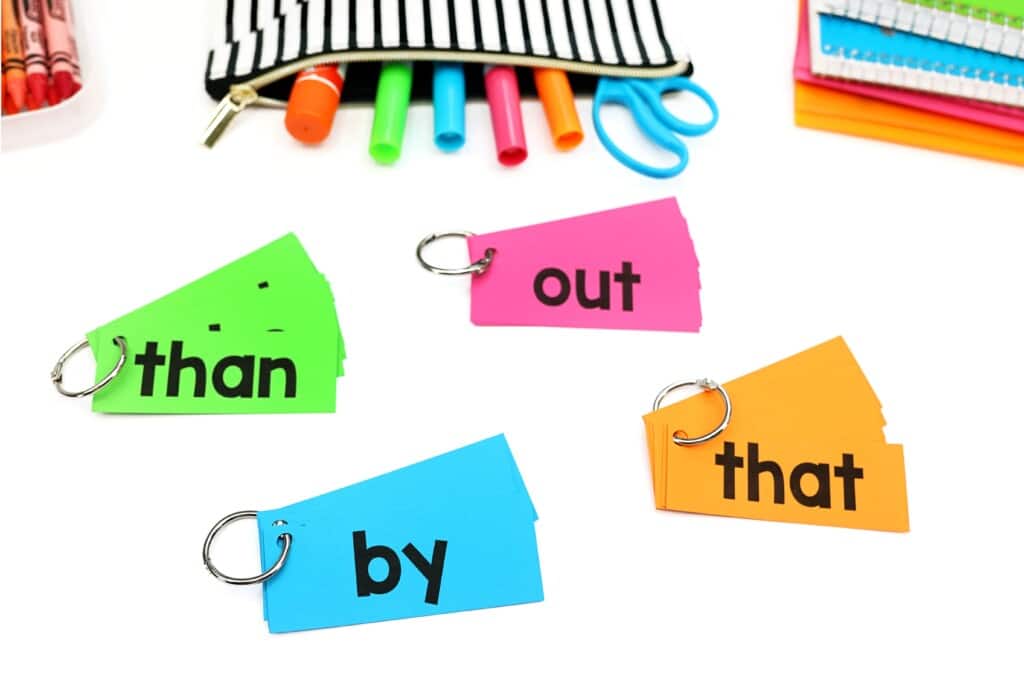
Ways to Practice with Sight Word Cards:
Not sure where to start? You can use the Dolch sight word lists, which I’ve included in a FREE DOWNLOAD on my Summer Bucket List post. They are a great place to start if you are looking for some sight words for reading small group warm ups!
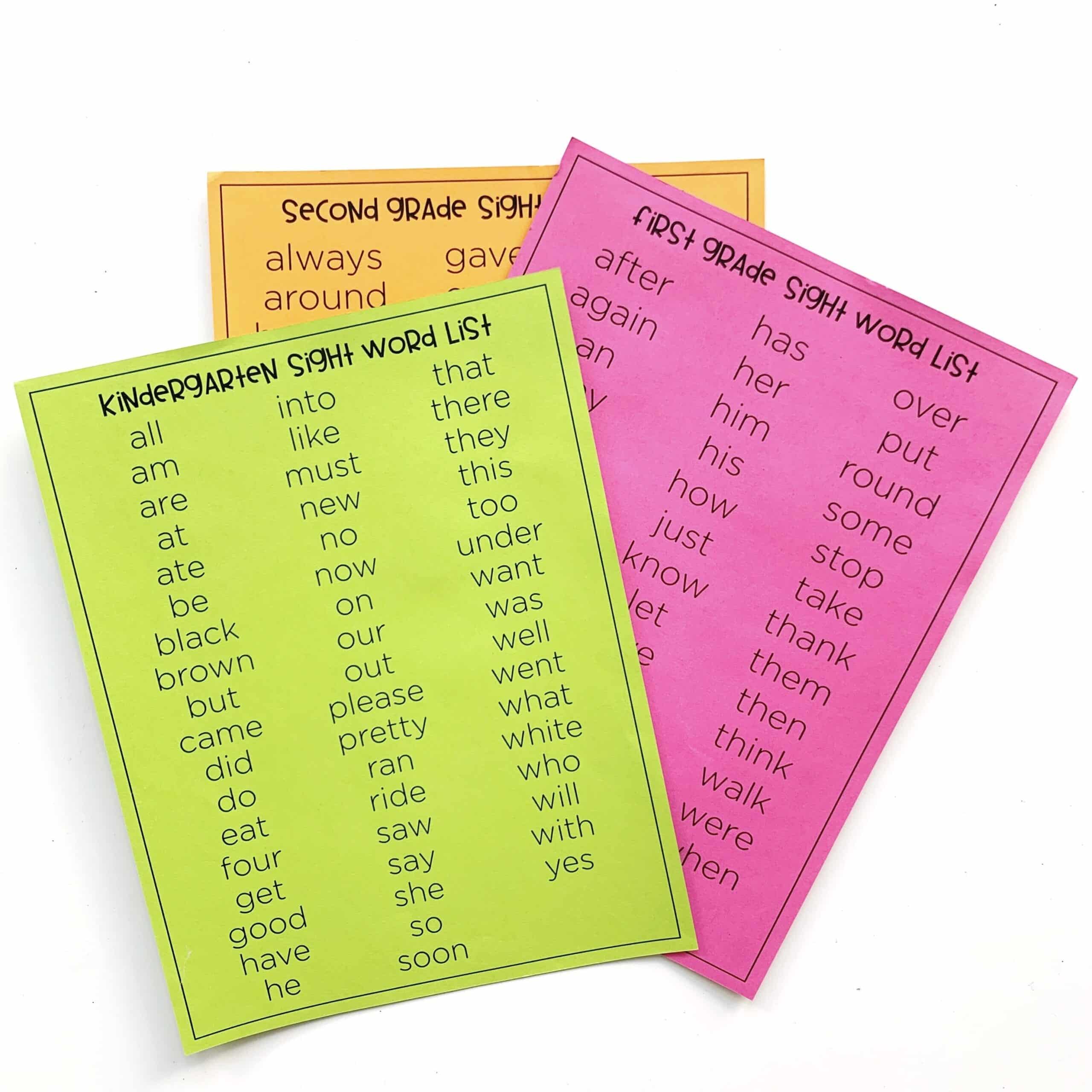
You can also use the cards from my Bubble Gum Sight Word Tracking or Superhero Sight Word Tracking sets for a fun, themed twist with your reading small group warm ups.
If you’re loving these ideas for reading small group warm ups, but wish you had everything you need for your small group lessons in one place, I’ve got you covered.
My Decodable Readers and Phonics Lesson Plans were created to take the guesswork out of small group instruction and reading small group warm ups. Each lesson includes:
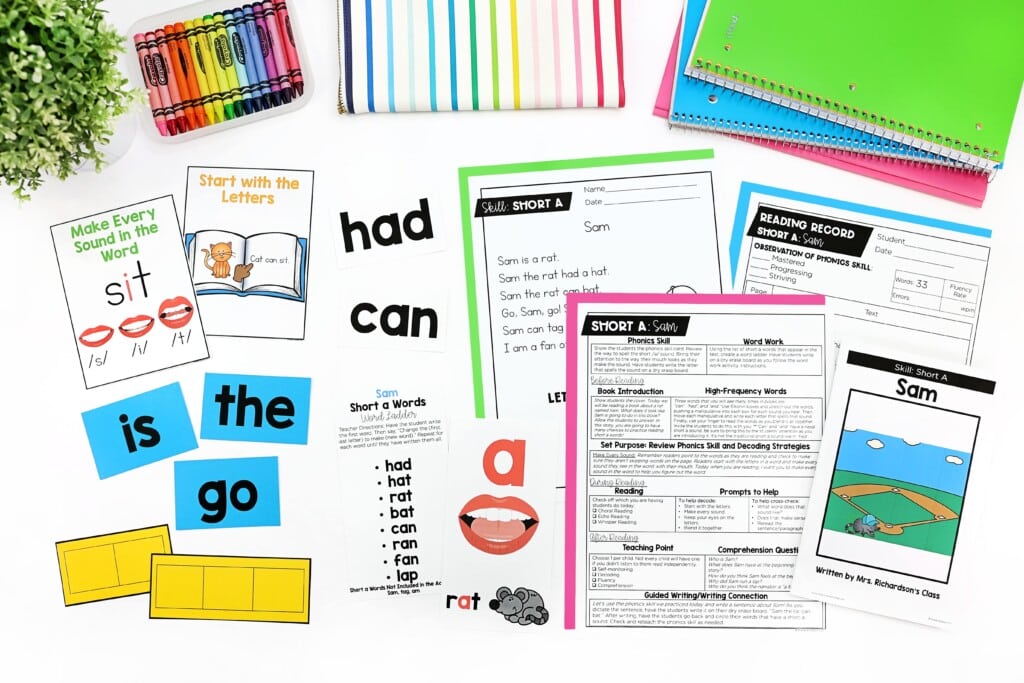
They’re aligned with best practices for structured literacy and make it easy to deliver explicit, effective phonics instruction—all in one tidy resource.
Whether you’re new to reading small groups or just want to make planning a SNAP, these lessons give you everything you need to teach with confidence—from reading small group warm ups to comprehension skills- and help your readers make real, lasting progress.
You can learn more about my decodable readers and lessons here!
No matter where you are in your reading small group journey, it’s important that you begin. Something is better than nothing, friends!

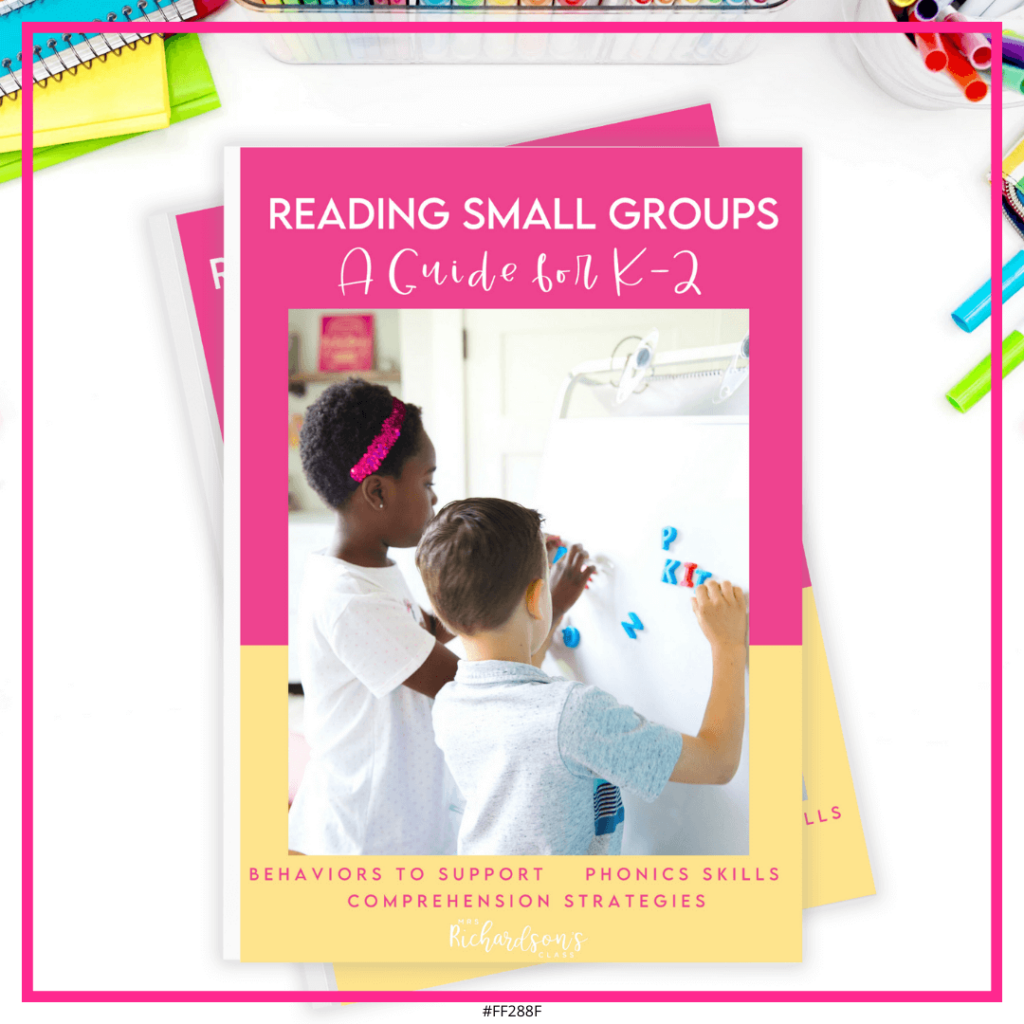
Want to use the latest research to boost your readers during small groups? This FREE guide is packed with engaging ideas to help them grow!

I’m a K-1 teacher who is passionate about making lessons your students love and that are easy to implement for teachers. Helping teachers like you navigate their way through their literacy block brings me great joy. I am a lifelong learner who loves staying on top of current literacy learning and practices. Here, you’ll find the tools you need to move your K-2 students forward!
